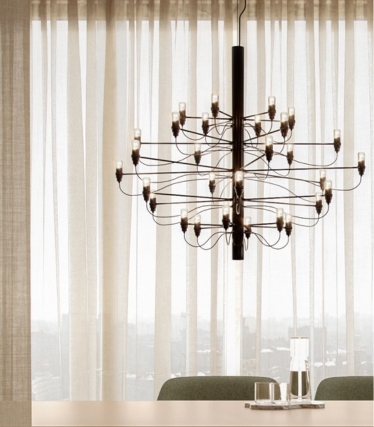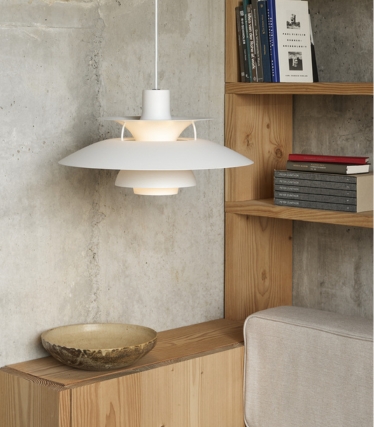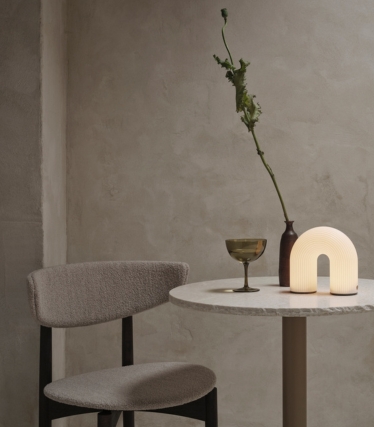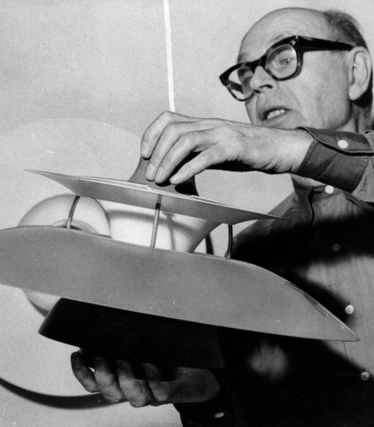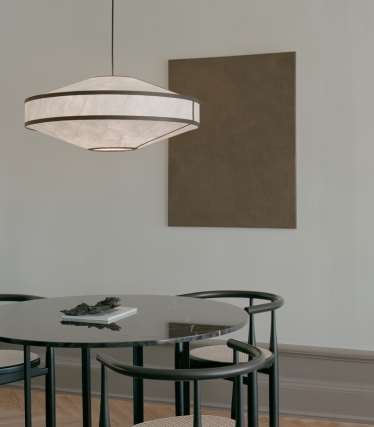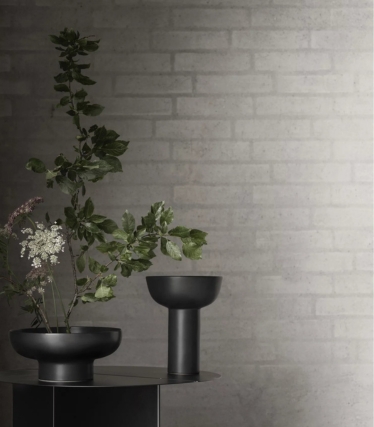GUBI - Designers
THE DESIGNERS FROM GUBIDenmark is world-renowned for its long, impressive design heritage, where a design house like GUBI has managed to make its mark. Of course, this didn't happen easily or alone, as since 1967 they have collaborated with both renowned designers and emerging talents from around the world, resulting in a carefully selected range of exquisite, high-quality furniture. GUBI was founded in 1967 by current owner and CEO Jacob Gubi's parents with a focus on producing the family's own design furniture. Today, however, the company is known for designing, creating and launching a range of one-of-a-kind furniture, lamps and home accessories that attract attention around the world. GUBI's signature pieces manage to evoke emotions and tell meaningful stories that make the different designs seem timeless and captivating. GUBI brings together forgotten design icons from the past with contemporary classics, creating a visionary collection that embodies 100 years of history, sold across the globe. Over the years, Jacob Gubi has managed to maintain the company's creative vision through numerous collaborations with national and international designers, who together have created and produced a range of aesthetic, functional, durable and not least unique designs.
)
Mads Caprani
Danish lamp designer Mads Caprani began his design journey at Louis Poulsen when they took advantage of his technical skills as an electrical engineer. In this position, he collaborated with a number of talented and prominent designers, including Arne Jacobsen, Poul Henningsen and Verner Panton. Interacting with these visionaries sparked an interest in design in Caprani, which marked the beginning of his large lamp company that generated great global success.
In 1967, Mads Caprani's father, Micheli Caprani, acquired the lamp factory Rotaflex, which Mads Caprani joined 10 years later with a clear ambition to make his own mark with his pleated lampshades, which were highly unusual for their time, but quickly became a favorite among his customers. In 1979, Caprani himself took over the company from his father and changed the name to Caprani Light, turning the small Danish company into a big global name with branches across Europe, in Chicago and Wisconsin in the US. With this generational shift, he also changed his own focus from just lampshades to designing entire lamps, initially in wood, before exploring other natural materials such as metal and stone.
Of all Caprani's lamps, it is undoubtedly the Timberline floor lamp that both fulfilled all his ambitions for a lamp design and secured his legacy. Timberline is a unique and remarkable design with a timeless and classic aesthetic that naturally made it an instant bestseller and made it known as the 'Caprani lamp' worldwide. Caprani died in 2014 at the age of 72 after realizing his dream of building one of the world's largest lighting brands. But this was certainly not the end of his story. Caprani's lighting designs have been rediscovered, and although his company is no longer in operation, the interest in a Caprani design has never been greater. It is therefore a great pleasure for the world-renowned lighting brand GUBI to work with Mads Caprani's family to bring back his iconic lamps to brighten the lives and homes of his fans around the world. It is also in this context that the iconic 'Caprani lamp' is experiencing a renaissance with the relaunch of the Timberline Floor Lamp, available in an exquisite combination of white plastic, birch and oak wood.
)
Bill Curry
In the 1960s and 70s, American designer Bill Curry managed to capture the zeitgeist of those decades with his iconic lamp designs that reflected his wonderful surroundings, which were transformed into simple and intelligent ideas with clear visual narratives. Additionally, Curry's multidisciplinary background and exposure to cutting-edge developments in electronics and aerospace systems engineering gave him the experience and confidence to venture into industrial design and subsequently launch his own furniture company, Design Line Inc, in 1962.
Curry developed a new norm for lighting, which included a piece that merged stand, bulb and shade into one organic form. He was also credited with developing the first 'total look' lamp shape that does away with the traditional 'base-bulb' concept and instead explores the exposed bulb in a playful and independent way. It is also from this concept that one of his most iconic designs is centered around. Stemlite is characterized by its slim frame and oversized opal glass lampshade, creating a harmonious, timeless and classic look that can survive generations. The series was developed with several models in different colors and materials, all characterized by the simple combination. This 'total look' was an instant hit, earning his series an Industrial Design Magazine Award for 'Best Lamps of the Year', with the US Department of Commerce exhibiting the Stemlite collection in the Soviet Union, Yugoslavia and Iraq as the perfect examples of American design. After winning more than 50 national design awards, Curry was described as one of California's leading designers in 1969, just a few years before his death at the young age of 43. His design legacy lives on today as one of the true pioneers of American space-age design.
In addition to his iconic Stemlite series, Curry also managed to design the exquisite Obello Portable Table Lamp shortly before his death, meaning he never actually got to see it in production or name it. Obello is inspired by the Atomic Age, the Space Race and the pop culture that defined Los Angeles in the 1970s, which evolved into the visual form of the lamp. This Obello lamp is an iconic space-age design that serves as a strong statement piece both inside and outside the home as well as a functional lighting source.
)
Bonderup & Thorup
In 1969, architects Claus Bonderup and Torsten Thorup graduated from the Royal Danish Academy of Fine Arts Schools of Architecture and began working for Danish architect Henning Larsen in Copenhagen. From there, the two architects began a collaboration that spanned the majority of their careers and resulted in a string of outstanding designs.
Thorup and Bonderup's works are characterized by their honest and classic simplicity with a sharp focus on detail and quality, which is particularly evident in the Semi from 1968. But it wasn't until the 80s that the then best-selling Danish design achieved worldwide recognition and iconic status, making it a favorite in many different interiors across the globe.
The Semi pendant is a classic and unique design with a distinctive curved, enameled metal shade that provides a diffused, pleasant and conical light, making it ideal above the dining table or in the kitchen. Due to the lightness of the shape, the unique, timeless design and the different colors and sizes that the design is available in, the Semi pendant becomes a highly versatile design that fits perfectly in all kinds of environments in both private and public spaces.
)
Corsini & Millet
Barba Corsini was a leading functionalist architect who won a number of international awards for his designs for the La Pedrera building in Barcelona. Corsini was greatly inspired by German architect Mies van der Rohe and American architect Frank Lloyd Wright. The Spanish architect's personal design style can aptly be described as 'powerful simplicity', which was also clearly represented by his Pedrera collection.
Talented architect Joaquim Ruiz Millet founded the Galeria H20 gallery in Barcelona in 1989, serving as owner, cultural agitator, exhibition curator and editor of books and design objects. In 1991, when the restoration of La Pedrera took place, he discovered the beauty of the wonderful PD2 floor lamp, which he prevented from being thrown out. Ruiz Millet wanted to save Corsini's works and make them better known and, most importantly, accessible to the public. This began his collaboration with Corsini on the relaunch of the original designs he had created for La Pedrera back in the day.
)
Gabriella Crespi
Italian designer and artist Gabriella Crepsi would have turned 100 years old in 2022, which GUBI is marking by putting the Bohemian 72 collection into production 50 years after it was first introduced. Throughout her extraordinary career in the design world, she managed to switch effortlessly between the royalty of Europe and the jet set of Hollywood, where her undeniable glamorous and sophisticated style made her the muse of designer Valentino and brought Audrey Hepburn, Gianni Versace and Hubert de Givenchy into her social circle. Crespi's aesthetic was characterized by the duality between modernist functionality and Baroque, and the shift between clean lines and sensuous curves.
Bohemian 72 is an elegant, flexible and refined rattan collection that reflects Crespi's fascination with sculptural forms and her curiosity for Eastern cultures. During her lifetime, these exclusive pieces were only produced for private clients, but today, 50 years after their first introduction, GUBI has worked from her original drawings and brought this exceptional collection to life for the first time. The collection includes an armchair, a three-seater sofa, a stool and a floor lamp - and you can find this unique floor lamp here.
)
Louis Weisdorf
Among the most influential and well-known Danish architects and industrial designers, Louis Weisdorf naturally comes to mind. Weisdorf described himself as a specialist in versatility, which aptly sums up his phenomenal and remarkable career that included a collaboration with Tivoli Gardens in Copenhagen, a successful architectural firm and a string of exceptional designs, including Multi-Lite and the Turbo pendants - and today several of his designs are world-renowned and highly sought after as collectors' items.
)
Robert Dudley Best
As well as being the heir to the world's largest lighting manufacturer Best & Lloyd, Robert Dudley Best was also an avid design enthusiast with a keen interest in breaking the barriers between industrial and artistic benefits, an interest also shared by his friend Walter Gropius. Walter Gropius was also the founder of the Bauhaus movement, which took Europe by storm with its strict, clean lines and style, which Dudley Best was highly influenced by. It was also during this period that the first drawings for the iconic Bestlite design were made.
)
Space Copenhagen
Signe Bindslev Henriksen and Peter Brundgaard Rützou founded the design studio Space Copenhagen in 2005, creating furniture, lamps, refined objects and art installations as well as decorative art for private homes, hotels and restaurants around the world. The ambition of the design duo is to create new ways of balancing opposites and creating contrasts, including classic with modern, industrial with organic, sculptural with minimalist and light with shadow.
)
Gio Ponti
Italian architect, designer and editor Gio Ponti is considered one of the most influential visionaries of the 20th century. Throughout his career, Ponti designed a variety of furniture and products, from cabinets, lamps and chairs to ceramics, glass objects and mirrors. He also erected buildings including the iconic Pirelli Tower skyscraper in Milan and the Denver Art Museum, which was built in 14 countries. Through his own design magazine, Domus, he promoted a curiosity and openness towards innovative design.
Ponti's designs were highly influenced by the motto 'la dolce vita', allowing people to surround themselves with good design to better enjoy life to the fullest. This vibrant Italian lifestyle is clearly reflected in his portfolio, which continues to inspire artists and designers far into the future. Today, many of his designs are snapped up by savvy collectors who want to add a touch of Italian aesthetics and effortless elegance to their interiors.
Among his exquisite range are the F. A. 33 mirrors, originally designed in 1933 for the most prominent lamp, glass and mirror manufacturer of the time, FontanaArte, which Ponti and Pietro Chiesa founded a few years earlier. F. A. The 33 mirror has a slightly curved shape and an iconic and timeless look that adds a fine, elegant touch to any interior style.
)
Jacques Adnet
French architect and Art Deco modernist Jacques Adnet was an icon of French modernism. In 1925, he was recognized as one of the most promising young designers by both the Salon d'Automne and Les Expositions des Arts Decoratifs - and to this day, he remains one of the most celebrated French designers whose enduring and innovative work is still highly sought after. Throughout his career, Adnet was always one of the first artists to express new trends, where he was also one of the first designers to combine leather and glass in the structure and decoration of a piece of furniture - which is also the case with his Adnet mirrors.
In 1950, Jacques Adnet formed a partnership with a famous French fashion house, for which he developed a line of understated yet remarkable leather upholstered furniture and home accessories. He designed an elegant and distinctive round leather mirror with exquisite details that make it particularly eye-catching and decorative in the interior. In addition to the unique leather and polished brass details, the Adnet mirror is also available in different sizes and in both square and circular shapes, each adding a sculptural touch and timelessness to the hallway, bedroom or bathroom, where they are highly decorative.
)
Mathieu Matégot
Mathieu Matégot was a versatile, independent and self-taught Hungarian designer, architect and artist who spent most of his life in Paris, where he settled in 1931 after graduating from Budapest's School of Art and Architecture. In 1939, he volunteered for the French army, after which he was held prisoner in Germany until he escaped in 1944. His wartime captivity was an important time in Matégot's career, as it was here that he became familiar with the innovative material and technique he named Rigitulle, which later became the most characteristic feature of his work.
It is this pioneering technique and material that he is best known for, which he later patented to add to all his designs. He always produced a limited amount of products, only up to 400, which continued until the 1960s when Matégot suddenly stopped production and started working with tapestries, which he continued for the rest of his career. Just like textiles, Rigitulle could also bend, fold and shape to give the furniture he designed a transparency, weightlessness and enduring modernity.
)
Paavo Tynell
"The man who enlightened Finland" - that's how the pioneering Finnish lighting designer Pavvo Tynell was affectionately named. Tynell was one of the founders of Taito Oy, where he became the first industrial manufacturer of light fixtures in Finland. Tynell became a more prominent designer in the 1930s and 40s, collaborating with some of the most recognized and famous Finnish architects, including Alvar Aalto as one of the most notable. Tynell's company Taito Oy produced luminaires for Alvar Aalto's major projects, such as Paimio Sanatorium and Viipuri Library.
Tynell was especially honored for his work at the design studio 'the Finland House' in New York, which showcased the impressive work of Finnish designers and craftsmen. His elegant brass designs became an instant success in North America and he began creating lighting designs for the prestigious American company Lightolier. Tynell was an exceptional master craftsman, creating his designs from a traditional aesthetic with a modern sensibility combined with an extensive use of perforated and polished brass as his primary material.
)
Greta M. Grossmann
Swedish design icon Greta M. Grossmann managed to maintain a long career spanning 40 years in both Europe and North America, where she was extremely active and influential in the male-dominated design world. She had many impressive achievements, all encompassing industrial design, interior design and architecture. In 1933, she completed her studies at the renowned Stockholm art institution, Konstfack, after which she immigrated to Los Angeles with her husband, Billy Grossman. Here she opened a highly acclaimed store on Rodeo Drive, where she was one of the first to bring modern Scandinavian aesthetics to Southern California. Her unique approach to Swedish modernism was an instant hit in Los Angeles, and it wasn't long before she had amassed a clientele of famous customers.
Among all her achievements in design and architecture, she is best known for her industrial designs, with the Gräshoppa floor lamp and Cobra table lamp being among her most famous works.
